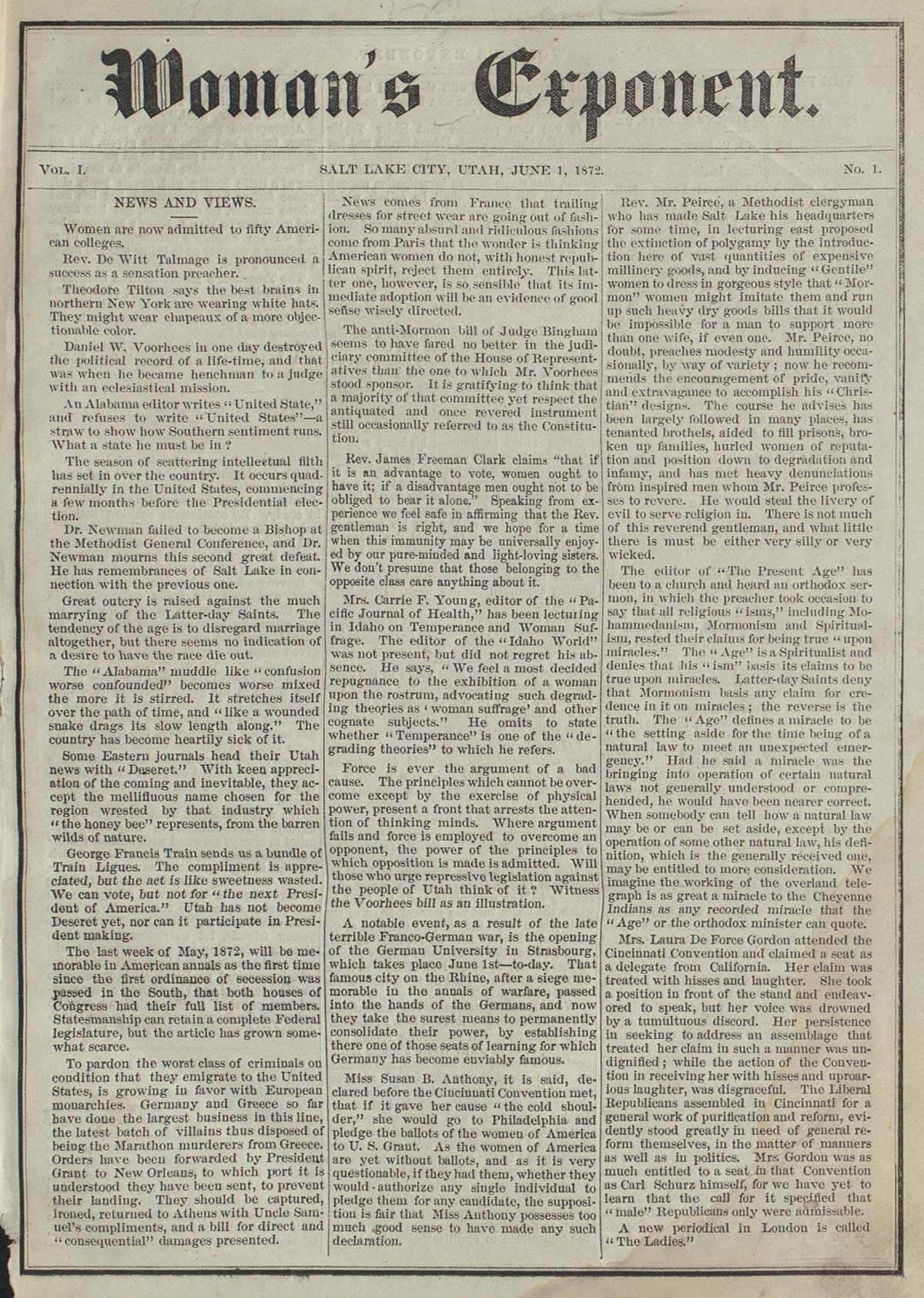The Woman’s Exponent
Utah plays a special role in the history of women’s suffrage. When it became a territory in 1870, women in this overwhelmingly Mormon settlement received the right to vote alongside men, making them among the tiny minority of nineteenth-century American women with the franchise. Mormon women were proud of their status as voters and took their rights of citizenship seriously.
Two years later a newspaper called the Woman’s Exponent began publication in Salt Lake City. Conceived as the voice of Utah's women and edited for many years by Emmeline B. Wells, it was one of the few women's publications west of the Mississippi at the time. The inaugural issue on June 1, 1872 prominently mentioned Susan B. Anthony on the first page. It also mentioned in passing the “great outcry” raised against “the much marrying of the Latter-day Saints,” a reference to the controversial practice of plural marriage. The Woman’s Exponent was no anti-polygamy screed. Its editors (and readers) unapologetically supported the right to practice polygamy, dashing hopes that Mormon women might use the vote to outlaw it.
The “Mormon Question” posed complicated questions for the women’s suffrage movement. Lucy Stone and the American Woman Suffrage Association distanced themselves completely from polygamous Mormon women voters, while Elizabeth Cady Stanton and Susan B. Anthony welcomed them into the National Woman Suffrage Association fold. When the Mormon Church officially renounced the practice of polygamy in 1890, the removal of that contentious issue helped pave the way for the two wings of the suffrage movement to reunite.
Participation in the national suffrage movement represented a high point of political activism for Mormon women. Far from the popular image of downtrodden women degraded by polygamy, these proud and committed suffragists saw no conflict between their religious beliefs and their activism on behalf of their sex.
